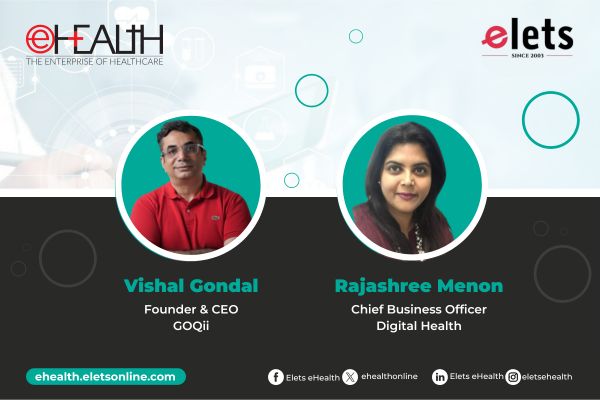
Dr K Madan Gopal, Sr Consultant at NITI Aayog explains how India’s digital health ecosystem evolved over the years.
The union government had set up institutions for E-health management. It had shared a vision of digital health many years ago by spelling out its ambition to create an Electronic Health Record (EHR) of 1.3 billion people that can be exchanged in a secured manner pan-India. It had the vision to set up a national telemedicine network, use IT for surveillance and monitoring of the programs across India, use digital technology for capacity building and training, and deployment of IT tools for governance and information dissemination. In 2011, the government established a National Resource Centre for Telemedicine in Lucknow to develop and strengthen telemedicine technologies as well as provide necessary technical assistance to state governments. In 2013, it came up with a Centre for Health Informatics at the National Institute of Health and Family Welfare in Delhi for managing the national health portal and other E-health initiatives. Next year, it established National Resource Centre for HER Standards in healthcare IT applications at CDAC, Pune, said Dr K Madan Gopal, Sr Consultant at NITI Aayog at the second edition of Elets Digital Health Conclave held with a theme ‘Reimagining Healthcare with Technology’.


Nevertheless, there were challenges, he observed, “Health IT was a fragmented information system operating in silos. But we were trying to address this with the integrated health information platform, where all the programs can ride on it, or at least all the programs can talk to each other. There was no standardized format used for data collection, and therefore, not interoperable. Our efforts were on to see how we move in this direction. There was also duplication of data collection on multiple systems leading to data redundancy. Other challenges were that we had a lack of unique identifiers for patients, providers and health facilities across the system and lack of common data analytics platform.”

So, there was a clear need for a comprehensive digital health framework and the government embarked upon a journey of national health blueprint, said Dr Madan Gopal. The government brought out the National Health Policy in 2017 that envisioned a digital health technology ecosystem and recognise the integral role of technology such as E-health, M-health, Cloud, IoT, wearables, among others in healthcare delivery. In 2018, NITI Aayog released a proposal on National Health Stack or NHS that provided a framework for the country’s futuristic digital health system specifying components required health IT programs. In 2019, the government finalised the National Digital Health Blueprint (NDHB) as an architectural framework for digital health in India for the evolution of the National Digital Health Ecosystem (NDHE), he added. Dr Madan Gopal was speaking at a panel discussion on ‘National Digital Health Mission: Enabling Efficiency of Healthcare Delivery’. Fellow panellists were Niraj Kumar Bansod, Director, Health Services, the Government of Chhattisgarh; Abhishek Kumar, Director, IT, National Digital Health Mission (NDHM), National Health Authority (NHA), the Government of India; and Dr Pankaj Gupta, Head, Access Health Digital.

Be a part of Elets Collaborative Initiatives. Join Us for Upcoming Events and explore business opportunities. Like us on Facebook , connect with us on LinkedIn and follow us on Twitter , Instagram.
"Exciting news! Elets technomedia is now on WhatsApp Channels Subscribe today by clicking the link and stay updated with the latest insights!" Click here!
















